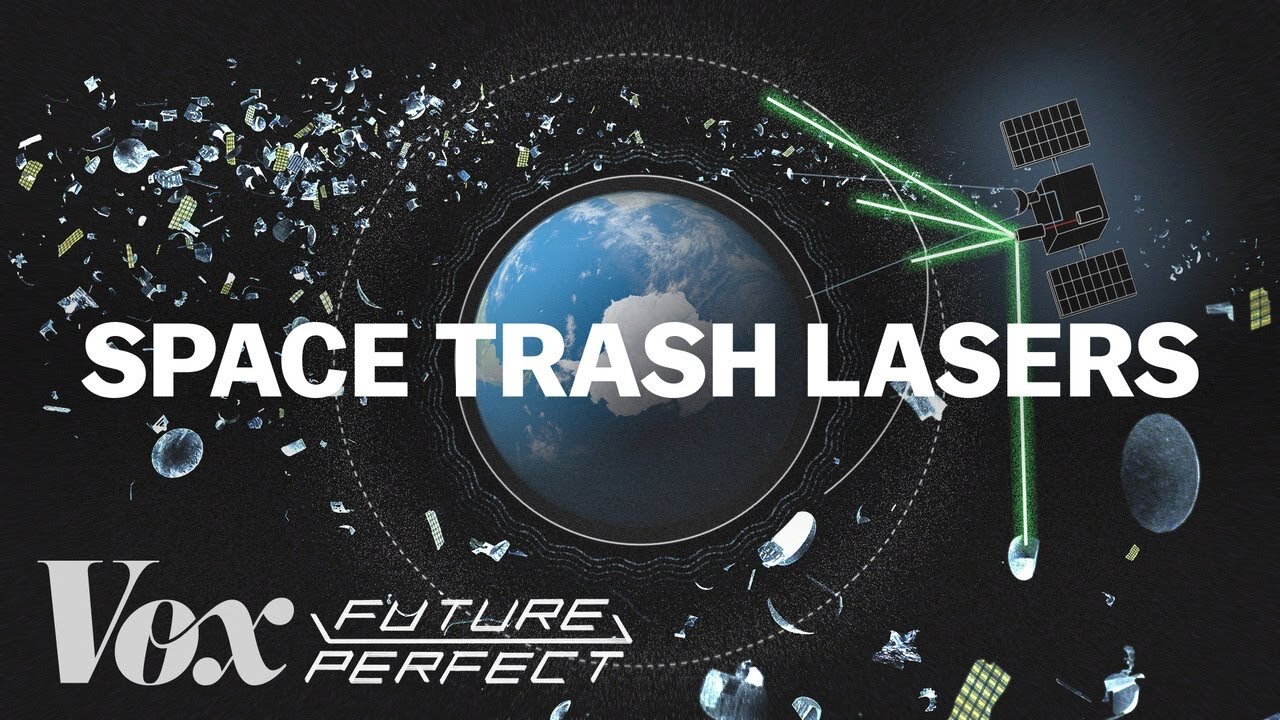Premium Only Content

Space trash lasers, explained
Humans are filling the space around Earth with trash. Most of this junk comes from abandoned satellites, discarded jet engines, and other mission-related debris. And when these objects unintentionally collide, they explode into thousands of debris fragments that can seriously damage operational spacecraft. With a booming commercial space industry that has put an unprecedented number of new satellites in space in just the past few years, our space debris problem is only getting worse.
Scientists worry about a situation called the “Kessler syndrome,” coined in the 1970s, where a runaway chain reaction of collisions and fragmentation results in a cloud of debris around Earth so dense that it threatens future space missions.
But there are a few options to begin clearing out the debris surrounding us, most of them united in a strategy of slowing the objects down enough to de-orbit them — forcing them to reenter Earth’s atmosphere to be destroyed. For the largest category of debris, fragments measuring more than 10 centimeters in size, one solution would be to send a small spacecraft into orbit, where it would rendezvous with the large piece of debris and slow its orbit either by pushing or pulling it.
For the smallest class of debris, which spans a range of 1 millimeter to 1 centimeter in size, there are two main ideas. One would be to put a physical sweeper into orbit to catch or slow these tiny, untrackable fragments. The other would be to introduce a cloud of metal dust into orbit to weigh them down and drag them into Earth’s atmosphere.
For the class of space debris in the middle, measuring between 1 and 10 centimeters, the idea of using ground- and space-based lasers as a cleanup method has circulated for years. In this approach, a laser would use radar to track a piece of debris as it flies into view and then blast a pulse of energy at it. The goal is to nudge the debris enough to disrupt its orbit, ideally enough to slow it down.
Right now, NASA considers this the most cost-effective way to deal with most space debris, but it will take commitment from the international space community to implement any space debris removal strategies.
-
 LIVE
LIVE
Joe Donuts Live
1 hour ago🟢 Squashing Bugs Like They Owe Me V-Bucks!
111 watching -
 LIVE
LIVE
Boxin
1 hour agoGrounded! Part 9! (rumble Grind to 500!)
60 watching -
 LIVE
LIVE
DoldrumDan
2 hours agoPARRY ONLY CONSORT RADAHN - TODAY IS THE DAY - FIRST PLAYTHROUGH
22 watching -
 8:10
8:10
MattMorseTV
16 hours ago $21.75 earnedTrump's "SURPRISE" for MADURO.
125K99 -
 24:39
24:39
GritsGG
16 hours agoINSANE Ranked Game on Warzone!
22.2K3 -
 LIVE
LIVE
Lofi Girl
2 years agoSynthwave Radio 🌌 - beats to chill/game to
527 watching -
 5:52:00
5:52:00
Akademiks
12 hours agoWAR IN ATLANTA Episode 5. YOUNG THUG FIRST INTERVIEW about SNITCHING, GUNNA... BREAKS DOWN CRYING!
165K9 -
 7:30:25
7:30:25
SpartakusLIVE
15 hours agoVerdansk Duos w/ Nicky || Saturday Spartoons - Variety Later?!
62.3K1 -
 1:38:47
1:38:47
Badlands Media
1 day agoDevolution Power Hour Ep. 387: Trump, Epstein, Durham Mysteries, and North Korea Ops
104K27 -
 1:05:23
1:05:23
Man in America
19 hours agoSoaring Gold Exposes the Imminent Crash of the Old System w/ John Perez
61.6K21